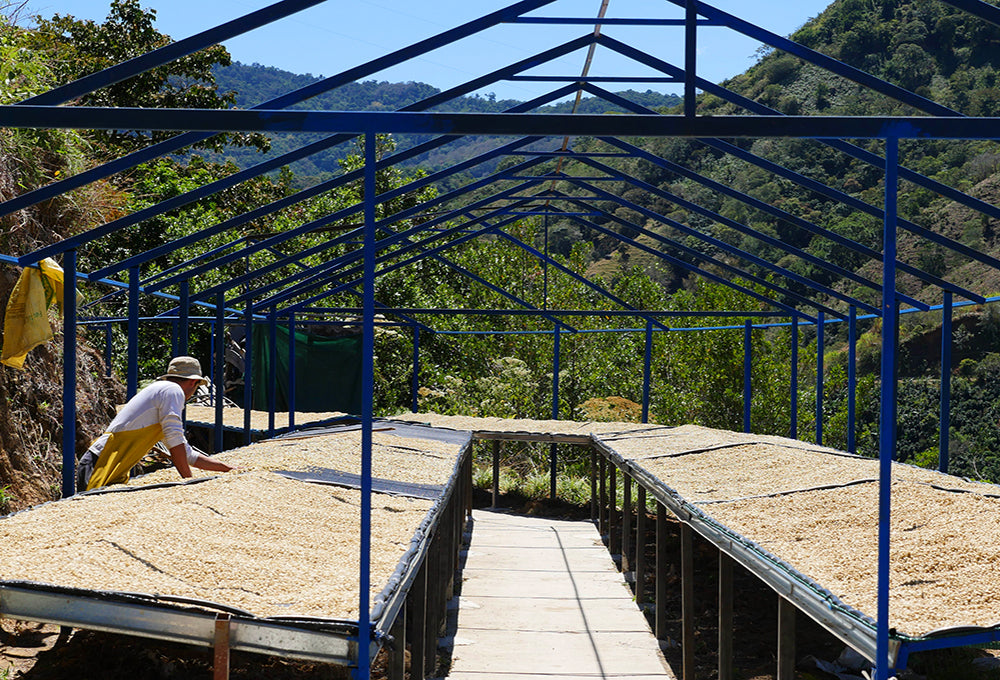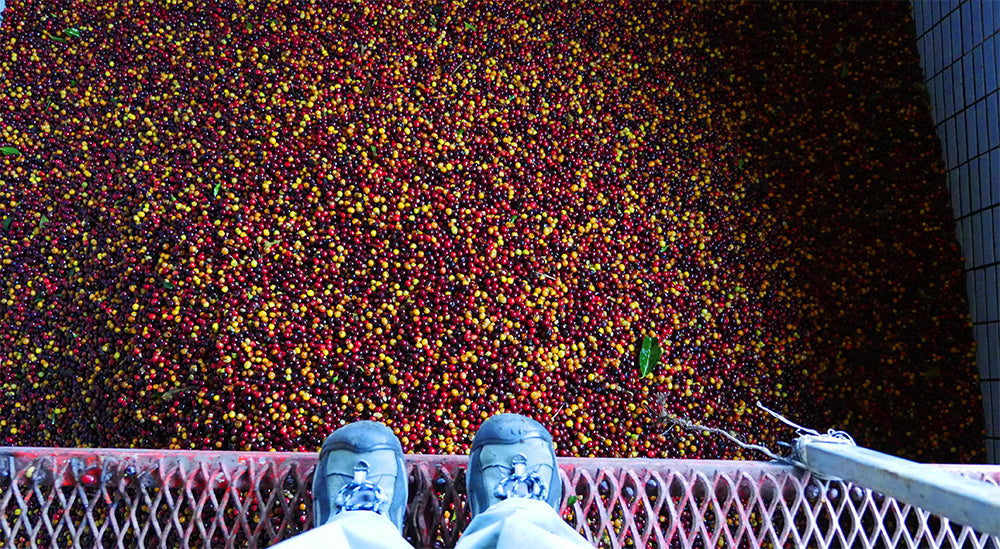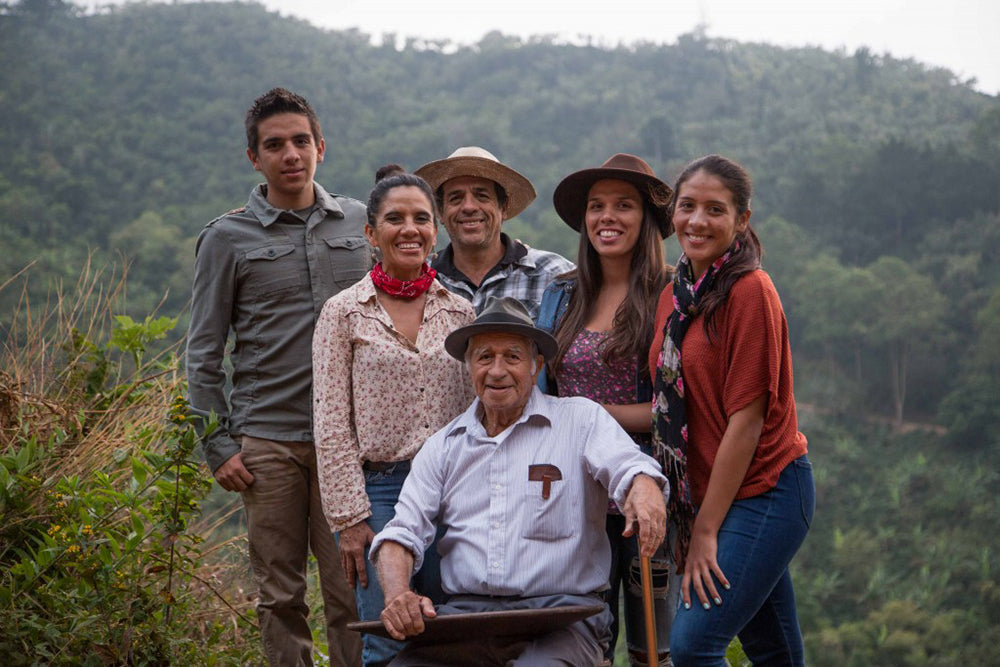Costa Rica With The Coffee Nomad
"I don’t know about you, but when I think Costa Rica I think of beaches, toucans, waterfalls and zip lining. Clearly this would be my first time traveling to Costa Rica, but something told me I was going to have a very different experience from the average visitor."
A couple of hours after landing into the capital of San José, I found myself cruising with Nela’s dad in his truck across the steep, green mountainsides of Tarrazú.
Tarrazú is known to produce some of the highest quality coffee in Costa Rica. It’s rich volcanic soil and varying elevations can result in clean, balanced and powerful coffees. The differences in elevations from 4,000 feet to 5,000 feet has a great influence on the flavor profiles that the region's coffee offers. And since these coffee cherries are dealing with less air at high altitudes, they mature more slowly. But it’s a process that the farmers, and ultimately coffee buyers find worth it.


Hello there!
My name is Erica, also known as The Coffee Nomad, and I will be guest blogging for SEED People’s Market for the next few weeks to share with you my journey to a coffee finca, or coffee farm, in Costa Rica!
But before I dive into that, allow me to tell you a little bit about myself and how I got into this whole coffee thing.
Around 3 years ago I was working as a news reporter in Central Texas (yes – one of those field news reporters chasing house fires and breaking news stories that often led to not-so-happy endings). Long story short, I began a coffee blog as a creative outlet. It started off very simple. I mean, I’d discuss the bare bones of a shop – the menu, location, aesthetics and pricing (thrilling, I know).
As I ventured on this journey a funny thing happened. The more I chatted with baristas (who were far too patient on their end) and the more books I read, I grew madly in love with the complexity of coffee. It became a fantasy of mine to tell the ultimate coffee story; to go to the source of coffee and share the stories from there.
Fast-forward a couple of years later and my small little creative outlet grew into its own brand. One day a girl reached out to me on Instagram. She told me she was from a coffee producing family from Costa Rica, but that she was in Southern California (my neck of the woods) for an internship. So, we met up for coffee and instantly connected over travel and well, coffee. She invited me to visit her family’s farm some day.
A couple of weeks went by after meeting Marianela, or Nela, and I kept playing around with the thought of making this trip really happen.

As a young, twenty-something female with a goal to visit coffee farms – Costa Rica was a natural fit. Among the Central and South Americas, Costa Rica has a more peaceful history. I knew I’d feel safer than the regions that are also rich in coffee production. It kind of goes without saying, Costa Rica is a stunning country. I looked up air fares and to my surprise, it wasn’t awful. In my head a little voice kept cheering me on, “Pura Vida!”
I knew there was no better time than now. I knew I had to go.
And so, I first set a couple of goals – one of them being to first gain a sponsor. After much thought about what local companies really align with my values, I decided to reach out to SEED People’s Market.
I was fortunate enough for them to agree to sponsor me and I was thrilled. It was the first time I felt that someone saw value in my vision. This no longer was a creative outlet for myself, but a platform to share like-minded passions about coffee and travel.
I truly couldn’t believe it. The fantasy I had three years ago to one day visit a coffee farm was going to become a reality.
That day was February 15th 2016 when I landed in San José, Costa Rica.
So - pack your mugs!
From coffee processing, to a real discussion on direct and fair trade, to the people behind the sourcing, this will be an adventure that will forever change the way you think about a cup of coffee.

Mugs Up & Pura Vida,
The Coffee Nomad










 (Drying beds at Don Eli Micro-Mill)
(Drying beds at Don Eli Micro-Mill) I sighed in relief. I was not under any fire or deadly combat. I then growled under my breath - I felt like I had just went to bed. Much like pulling off a band-aid, I yanked the covers off and stepped onto the wooden floors. I stumbled in the dark and became ever so grateful for my flashlight function on my iPhone. I threw on my comfiest clothing and hiking boots to begin my morning with Carlos at the micro-mill.
I sighed in relief. I was not under any fire or deadly combat. I then growled under my breath - I felt like I had just went to bed. Much like pulling off a band-aid, I yanked the covers off and stepped onto the wooden floors. I stumbled in the dark and became ever so grateful for my flashlight function on my iPhone. I threw on my comfiest clothing and hiking boots to begin my morning with Carlos at the micro-mill. 


 (Left to Right: Jacob, Lucia, Carlos, Don Eli, Nela and Maria Jose) Photo from
(Left to Right: Jacob, Lucia, Carlos, Don Eli, Nela and Maria Jose) Photo from 











